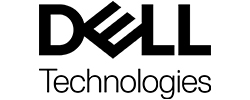July 19, 2024
Providing a Modern Digital Experience for Federal Government
Agencies aiming to meet elevated citizen expectations should look to technology partners that can help deliver an optimal digital experience.
 CDW Expert
CDW Expert
The digital experience is rapidly evolving, and federal agencies face many obstacles in meeting citizens’ and employees’ elevated expectations for their increasingly digital interactions with government. Most agencies struggle to keep pace with the digital transformation of private sector entities, but citizens and employees alike are cutting the public sector no slack. They’ve become accustomed to the convenience, efficiency, reliability and immediacy they get from online businesses and mobile applications, and they want the same level of service from the government. The Biden administration has recognized the need for federal agencies to modernize, issuing a mandate that calls for specific improvements to the digital experience across agencies. Though the challenges are many, agencies can meet these demands with holistic strategies designed to leverage innovative emerging technologies.
Learn how CDW can help deliver a modernized digital government experience.
The digital experience is rapidly evolving, and federal agencies face many obstacles in meeting citizens’ and employees’ elevated expectations for their increasingly digital interactions with government. Most agencies struggle to keep pace with the digital transformation of private sector entities, but citizens and employees alike are cutting the public sector no slack. They’ve become accustomed to the convenience, efficiency, reliability and immediacy they get from online businesses and mobile applications, and they want the same level of service from the government. The Biden administration has recognized the need for federal agencies to modernize, issuing a mandate that calls for specific improvements to the digital experience across agencies. Though the challenges are many, agencies can meet these demands with holistic strategies designed to leverage innovative emerging technologies.
Learn how CDW can help deliver a modernized
digital government experience.

Americans may interact with the federal government as citizens, but their experiences as consumers influence their expectations for these interactions. U.S. residents prefer engaging with federal services digitally: through websites (56%), call centers (28%) and mobile applications (19%). However, they perceive the government as lagging: Just 62% are satisfied with government online services compared with 81% for private sector online services.
The federal government has acknowledged this gap and made significant progress on the 2021 executive order to improve digital government. These efforts have reimagined long-standing platforms, such as SSA.gov, and led to new capabilities, including the automated routing of COVID-19 tests to public health departments. Back-end modernization has enabled dramatic improvements to front-end workflows; for example, single sign-on through login.gov.
Despite these successes, agencies still face challenges that hinder their ability to leverage automation, artificial intelligence and other emerging technologies. For most agencies, the question is not why modernize, but how. Consolidating and integrating disparate, legacy environments is difficult, especially with lean budgets. Modernization requires clear objectives, sustained effort and strategic investment in foundational infrastructure.
23%
The percentage of U.S. respondents who report regularly interacting with government through digital channels
Source: deloitte.com, “Digital government and citizen experience survey,” April 19, 2023
But the benefits are significant. Automation improves the speed and quality of workflows for citizens and employees. Well-integrated systems enable data sharing, which makes user experiences cohesive and provides valuable insights. Streamlined processes remove roadblocks so that employees can focus on outcomes. The ultimate goal of digital services is both simple and powerful: Citizens can get the information, services and support they need through easily accessible channels.
Successful digital transformation balances long-term strategy and near-term tactics. These should be informed by a deep understanding of agencies’ unique environments (to ensure plans are realistic and achievable) and best practices of human-centered design (to ensure technology investments align with citizens’ needs). When agencies invest in the right solutions and services, they can deliver a seamless digital experience that exceeds citizens’ expectations.
Americans may interact with the federal government as citizens, but their experiences as consumers influence their expectations for these interactions. U.S. residents prefer engaging with federal services digitally: through websites (56%), call centers (28%) and mobile applications (19%). However, they perceive the government as lagging: Just 62% are satisfied with government online services compared with 81% for private sector online services.
The federal government has acknowledged this gap and made significant progress on the 2021 executive order to improve digital government. These efforts have reimagined long-standing platforms, such as SSA.gov, and led to new capabilities, including the automated routing of COVID-19 tests to public health departments. Back-end modernization has enabled dramatic improvements to front-end workflows; for example, single sign-on through login.gov.
Despite these successes, agencies still face challenges that hinder their ability to leverage automation, artificial intelligence and other emerging technologies. For most agencies, the question is not why modernize, but how. Consolidating and integrating disparate, legacy environments is difficult, especially with lean budgets. Modernization requires clear objectives, sustained effort and strategic investment in foundational infrastructure.
But the benefits are significant. Automation improves the speed and quality of workflows for citizens and employees. Well-integrated systems enable data sharing, which makes user experiences cohesive and provides valuable insights. Streamlined processes remove roadblocks so that employees can focus on outcomes. The ultimate goal of digital services is both simple and powerful: Citizens can get the information, services and support they need through easily accessible channels.
Successful digital transformation balances long-term strategy and near-term tactics. These should be informed by a deep understanding of agencies’ unique environments (to ensure plans are realistic and achievable) and best practices of human-centered design (to ensure technology investments align with citizens’ needs). When agencies invest in the right solutions and services, they can deliver a seamless digital experience that exceeds citizens’ expectations.
23%
The percentage of U.S. respondents who report regularly interacting with government through digital channels
Source: deloitte.com, “Digital government and citizen experience survey,” April 19, 2023
Digital Government by the Numbers
53%
The increase in customer satisfaction from December 2022 to September 2023 after the Social Security Administration partnered with the U.S. Digital Service to overhaul SSA.gov
Source: U.S. Digital Service, Impact Report 2024, May 2024
41%
The increase in IRS.gov usage during the 2024 filing season after the agency released new online tools to help taxpayers check their refund status and perform other tasks
Source: treasury.gov, “Continuing Improvements to IRS Customer Service in Filing Season 2024,” June 7, 2024
69%
The percentage of federal agency leaders who cite a lack of funding to maintain the infrastructure needed for emerging technologies as a barrier to modernization
Source: EY, 2024 EY Federal, State and Local Trends Report, February 2024
Digital Government by the Numbers
53%
The increase in customer satisfaction from December 2022 to September 2023 after the Social Security Administration partnered with the U.S. Digital Service to overhaul SSA.gov
Source: U.S. Digital Service, Impact Report 2024, May 2024
41%
The increase in IRS.gov usage during the 2024 filing season after the agency released new online tools to help taxpayers check their refund status and perform other tasks
Source: treasury.gov, “Continuing Improvements to IRS Customer Service in Filing Season 2024,” June 7, 2024
69%
The percentage of federal agency leaders who cite a lack of funding to maintain the infrastructure needed for emerging technologies as a barrier to modernization
Source: EY, 2024 EY Federal, State and Local Trends Report, February 2024
- COMMON TRANSFORMATIONAL OBSTACLES
- AUTOMATION AND AI APPROACHES
- GOVERNMENT SOLUTIONS AND SERVICES
Agency leaders recognize the benefits of IT modernization but face barriers such as insufficient funding to maintain the infrastructure for emerging technologies (69%), outdated hardware (42%) and outdated software (35%), EY reports. As a result, leaders may not prioritize modernization and may continue to accumulate technical debt.
LIMITED IT BUDGETS: Lean budgets and restrictive processes hamper digital transformation, even though emerging technologies such as cloud networks, automation and AI typically lower costs by increasing efficiency and reducing technical debt. IT leaders can navigate this dilemma by strategically investing in technologies that target key objectives and enable incremental progress.
LEGACY EQUIPMENT: Legacy systems and associated technical debt are a major obstacle for many agencies. Outdated infrastructure and poorly integrated applications make it difficult, if not impossible, to adopt emerging technologies. IT staffers may spend so much time on maintenance that they have little bandwidth to upskill or to oversee major upgrades.
FRAGMENTED SYSTEMS: In the past, solutions were regularly implemented piecemeal for a specific need, which resulted in disjointed solutions. Over time, these disparate systems and the inability to integrate them led to operational inefficiency, poor user experience, security vulnerabilities and quickly accruing technical debt.
WORKFORCE SHORTAGES: For 38 percent of federal leaders, a lack of skilled employees is inhibiting IT modernization. Emerging technologies are more efficient, but they require different skill sets. Managed services can be a cost-effective way to augment staff; however, security clearances and other restrictions add complexity to outsourcing and contracting arrangements.
BUREAUCRATIC PROCESSES: Agencies’ lengthy budget cycles, stringent approval procedures and high staff mobility make them comparatively less agile than the private sector. Often, this leads to a continuous game of catch-up as citizen expectations evolve faster than agencies’ capabilities. Modernization helps to minimize this gap by focusing on efficient, streamlined operations.
Click Below to Continue Reading
Essential Best Practices
Citizens’ expectations are simple in the sense that they want digital interactions that are fast, easy and seamless — the “Amazon effect.” But dig deeper, and nuances emerge. An EY global survey revealed seven citizen personas, each with their own implications for how governments can approach digital services. Agencies will achieve the most success when they understand their users and apply those insights to craft online journeys.
Use Human-Centered Design: With citizen satisfaction as the goal, agencies can use relevant metrics to assess their performance before, during and after modernization to quantify their performance and progress.
Solve Problems Strategically: Agencies often allocate funding to solve tactical problems without an overarching strategic framework. Longer-term, adaptive planning ensures that solutions align with key objectives and reduces the risk of poor integration.
Reduce Technical Debt: Technical debt makes it difficult for IT teams to pursue meaningful innovations. Ease of management within the existing IT environment should be part of the decision-making criteria for new solutions.
Achieve Incremental Improvements: Government’s slow pace can impede agility and flexibility. However, agencies that take time to build long-term strategies can also plan for incremental progress that generates momentum and lasting change.
In the private sector, the goal of modernization is to achieve automation and, increasingly, AI-enabled operations. While federal agencies share these ambitions, their path to readiness can be longer and slower. Facing lean budgets and other challenges, agencies often must deploy advanced technologies and build new capabilities in stages rather than through sweeping conversions.
Accordingly, it is essential to align modernization targets with current maturity levels. For instance, when it comes to AI, agencies might aim for advanced capabilities before they have defined their desired outcomes and developed the necessary infrastructure to leverage AI effectively. This often requires foundational IT work, such as modernizing outdated systems and reducing fragmented, siloed processes to enable departmental collaboration.
Agencies can achieve meaningful — and eventually significant — gains through incremental progress. The crucial factor is to base IT decisions and investments on a strategic playbook that accounts for the unique challenges and limitations of the federal landscape. When agencies do so, they can transform the citizen experience through digital channels and dramatically enhance the quality of citizen engagement.
Click Below to Continue Reading
DIGITAL EXPERIENCES: As outlined by the U.S. Digital Service, the goal of modernization is to create digital experiences that are simple, efficient and accessible. Citizens prefer digital services, including websites, mobile applications, web chats, chatbots and interactive voice response (IVR) systems. Agencies that have invested in digital platforms report significant improvements in user satisfaction (for example, a 53% increase after a major update of SSA.gov). Equally important, modern platforms are more effective at connecting citizens with vital services, from internet connectivity to infant formula. The National Archives and Records Administration will use $9.1 million from the Technology Modernization Fund to replace outdated IT systems with cloud-based software, enabling veterans, their families and government users to access records faster and more securely.
AI-POWERED SERVICES: AI encompasses a wide range of capabilities, making agencies’ AI readiness dependent on several factors. AI-enabled chatbots can easily provide digital services, even for agencies that are not fully ready to automate customer support. Agencies also use AI to offer advanced IVR systems that understand callers’ intent in multiple languages. With strong data governance — visibility into data storage and control over access — AI-enabled IVR can handle more advanced queries. Consumers expect accurate, relevant responses from private sector chatbots and increasingly demand the same 24/7 self-service capabilities from the government. The alternative is unpalatable for both citizens and agencies, as seen in the 2022 tax season, when the IRS received 73 million calls but answered only one-tenth of them.
STAFF AUGMENTATION: Modernizing back-end systems to enable digital services can be transformative for agency employees. Automating processes and empowering citizens with self-service capabilities for tasks such as renewing licenses or registering businesses can significantly reduce the burden on administrative staff. The initial work is substantial: developing online pathways for various user personas, updating IT environments for back-end integration and building data analytics for continuous improvement. However, the result is fewer routine tasks that require manual processes and in-person interactions. Employees can then focus on higher-level work and provide face-to-face support for citizens needing extra help. IT departments see similar benefits, which is crucial for agencies struggling to fill IT vacancies and replace senior experts with less experienced new hires.
AUTOMATED SECURITY: Government facilities are prime targets for ransomware attacks, with 156 incidents reported to the FBI’s Internet Crime Complaint Center in 2023. Modernizing IT environments can significantly reduce agencies’ vulnerability to ransomware and other attacks. Outdated systems often lack the visibility, control and advanced capabilities (particularly automation) needed to guard against hackers effectively. Digital transformation enhances defenses by enabling AI tools to monitor system activity dynamically, identify potential threats and respond swiftly. These tools also automate repetitive tasks, allowing IT teams to focus on more complex alerts. Automation further supports the implementation of recommended security strategies, such as holistic identity and access management and zero-trust models, bolstering overall security.
With decades of experience in the federal sector, CDW Government helps agencies develop digital transformation strategies that are focused and flexible.
Holistic Problem-Solving: Third-party experts often address specific problems at a moment in time, but CDW’s approach is different. We help customers clarify the issues they want to resolve — which may differ from initial perceptions — and think holistically about their objectives, expectations and pain points. As a vendor-agnostic partner, our assessments guide agency and IT decision-makers through the full lifecycle of a solution. For example, we identify the best opportunities for automation within an operational area, consider integration requirements, and assess whether internal skills and resources can manage each solution. Our core focus is on resolving issues effectively and understanding how systems and software will impact the agency in the future.
Staff Support and Training: Modernization helps agencies tackle workforce shortages by streamlining the hiring process, using data for better workforce decision-making, incorporating AI into HR functions, and leveraging automation and AI to boost employee efficiency. For example, by centralizing recruitment functions, NASA reduced its time to hire by nearly half. However, with many thousands of vacant IT positions across the federal government, most agencies need multiple strategies to address shortages.
Managed services offer a cost-effective way to acquire the necessary skills and expertise for mission-critical positions and digital transformation. Agencies increasingly engage third-party experts for help desk services and to address complex areas such as cloud infrastructure, backup and recovery, and network infrastructure. CDW helps by augmenting internal skills, providing continuity, filling gaps, upskilling employees on emerging technologies and automating IT services.
IT Assessments and Strategy: Compared with the private sector, federal agencies still manage significant on-premises infrastructure, which can hinder modernization efforts. We help agencies assess their options for automating infrastructure and facilitate seamless migration to the cloud where appropriate.
Beyond evaluating existing environments and offering strategic guidance, we provide tactical support in application modernization, full-stack observability and cybersecurity. Our modernization services enable agencies to leverage data analytics and performance monitoring so they can continuously refine and enhance the quality of their citizen-facing digital services. Expert support is crucial as agencies seek to optimize IT investments, integrate new solutions, and prepare for automation, AI and other advanced capabilities. This comprehensive approach ensures that agencies are well positioned to deliver engaging, high-quality citizen services.
- COMMON TRANSFORMATIONAL OBSTACLES
- AUTOMATION AND AI APPROACHES
- GOVERNMENT SOLUTIONS AND SERVICES
Agency leaders recognize the benefits of IT modernization but face barriers such as insufficient funding to maintain the infrastructure for emerging technologies (69%), outdated hardware (42%) and outdated software (35%), EY reports. As a result, leaders may not prioritize modernization and may continue to accumulate technical debt.
LIMITED IT BUDGETS: Lean budgets and restrictive processes hamper digital transformation, even though emerging technologies such as cloud networks, automation and AI typically lower costs by increasing efficiency and reducing technical debt. IT leaders can navigate this dilemma by strategically investing in technologies that target key objectives and enable incremental progress.
LEGACY EQUIPMENT: Legacy systems and associated technical debt are a major obstacle for many agencies. Outdated infrastructure and poorly integrated applications make it difficult, if not impossible, to adopt emerging technologies. IT staffers may spend so much time on maintenance that they have little bandwidth to upskill or to oversee major upgrades.
FRAGMENTED SYSTEMS: In the past, solutions were regularly implemented piecemeal for a specific need, which resulted in disjointed solutions. Over time, these disparate systems and the inability to integrate them led to operational inefficiency, poor user experience, security vulnerabilities and quickly accruing technical debt.
WORKFORCE SHORTAGES: For 38 percent of federal leaders, a lack of skilled employees is inhibiting IT modernization. Emerging technologies are more efficient, but they require different skill sets. Managed services can be a cost-effective way to augment staff; however, security clearances and other restrictions add complexity to outsourcing and contracting arrangements.
BUREAUCRATIC PROCESSES: Agencies’ lengthy budget cycles, stringent approval procedures and high staff mobility make them comparatively less agile than the private sector. Often, this leads to a continuous game of catch-up as citizen expectations evolve faster than agencies’ capabilities. Modernization helps to minimize this gap by focusing on efficient, streamlined operations.
Click Below to Continue Reading
Essential Best Practices
Citizens’ expectations are simple in the sense that they want digital interactions that are fast, easy and seamless — the “Amazon effect.” But dig deeper, and nuances emerge. An EY global survey revealed seven citizen personas, each with their own implications for how governments can approach digital services. Agencies will achieve the most success when they understand their users and apply those insights to craft online journeys.
Use Human-Centered Design: With citizen satisfaction as the goal, agencies can use relevant metrics to assess their performance before, during and after modernization to quantify their performance and progress.
Solve Problems Strategically: Agencies often allocate funding to solve tactical problems without an overarching strategic framework. Longer-term, adaptive planning ensures that solutions align with key objectives and reduces the risk of poor integration.
Reduce Technical Debt: Technical debt makes it difficult for IT teams to pursue meaningful innovations. Ease of management within the existing IT environment should be part of the decision-making criteria for new solutions.
Achieve Incremental Improvements: Government’s slow pace can impede agility and flexibility. However, agencies that take time to build long-term strategies can also plan for incremental progress that generates momentum and lasting change.
In the private sector, the goal of modernization is to achieve automation and, increasingly, AI-enabled operations. While federal agencies share these ambitions, their path to readiness can be longer and slower. Facing lean budgets and other challenges, agencies often must deploy advanced technologies and build new capabilities in stages rather than through sweeping conversions.
Accordingly, it is essential to align modernization targets with current maturity levels. For instance, when it comes to AI, agencies might aim for advanced capabilities before they have defined their desired outcomes and developed the necessary infrastructure to leverage AI effectively. This often requires foundational IT work, such as modernizing outdated systems and reducing fragmented, siloed processes to enable departmental collaboration.
Agencies can achieve meaningful — and eventually significant — gains through incremental progress. The crucial factor is to base IT decisions and investments on a strategic playbook that accounts for the unique challenges and limitations of the federal landscape. When agencies do so, they can transform the citizen experience through digital channels and dramatically enhance the quality of citizen engagement.
Click Below to Continue Reading
DIGITAL EXPERIENCES: As outlined by the U.S. Digital Service, the goal of modernization is to create digital experiences that are simple, efficient and accessible. Citizens prefer digital services, including websites, mobile applications, web chats, chatbots and interactive voice response (IVR) systems. Agencies that have invested in digital platforms report significant improvements in user satisfaction (for example, a 53% increase after a major update of SSA.gov). Equally important, modern platforms are more effective at connecting citizens with vital services, from internet connectivity to infant formula. The National Archives and Records Administration will use $9.1 million from the Technology Modernization Fund to replace outdated IT systems with cloud-based software, enabling veterans, their families and government users to access records faster and more securely.
AI-POWERED SERVICES: AI encompasses a wide range of capabilities, making agencies’ AI readiness dependent on several factors. AI-enabled chatbots can easily provide digital services, even for agencies that are not fully ready to automate customer support. Agencies also use AI to offer advanced IVR systems that understand callers’ intent in multiple languages. With strong data governance — visibility into data storage and control over access — AI-enabled IVR can handle more advanced queries. Consumers expect accurate, relevant responses from private sector chatbots and increasingly demand the same 24/7 self-service capabilities from the government. The alternative is unpalatable for both citizens and agencies, as seen in the 2022 tax season, when the IRS received 73 million calls but answered only one-tenth of them.
STAFF AUGMENTATION: Modernizing back-end systems to enable digital services can be transformative for agency employees. Automating processes and empowering citizens with self-service capabilities for tasks such as renewing licenses or registering businesses can significantly reduce the burden on administrative staff. The initial work is substantial: developing online pathways for various user personas, updating IT environments for back-end integration and building data analytics for continuous improvement. However, the result is fewer routine tasks that require manual processes and in-person interactions. Employees can then focus on higher-level work and provide face-to-face support for citizens needing extra help. IT departments see similar benefits, which is crucial for agencies struggling to fill IT vacancies and replace senior experts with less experienced new hires.
AUTOMATED SECURITY: Government facilities are prime targets for ransomware attacks, with 156 incidents reported to the FBI’s Internet Crime Complaint Center in 2023. Modernizing IT environments can significantly reduce agencies’ vulnerability to ransomware and other attacks. Outdated systems often lack the visibility, control and advanced capabilities (particularly automation) needed to guard against hackers effectively. Digital transformation enhances defenses by enabling AI tools to monitor system activity dynamically, identify potential threats and respond swiftly. These tools also automate repetitive tasks, allowing IT teams to focus on more complex alerts. Automation further supports the implementation of recommended security strategies, such as holistic identity and access management and zero-trust models, bolstering overall security.
With decades of experience in the federal sector, CDW Government helps agencies develop digital transformation strategies that are focused and flexible.
Holistic Problem-Solving: Third-party experts often address specific problems at a moment in time, but CDW’s approach is different. We help customers clarify the issues they want to resolve — which may differ from initial perceptions — and think holistically about their objectives, expectations and pain points. As a vendor-agnostic partner, our assessments guide agency and IT decision-makers through the full lifecycle of a solution. For example, we identify the best opportunities for automation within an operational area, consider integration requirements, and assess whether internal skills and resources can manage each solution. Our core focus is on resolving issues effectively and understanding how systems and software will impact the agency in the future.
Staff Support and Training: Modernization helps agencies tackle workforce shortages by streamlining the hiring process, using data for better workforce decision-making, incorporating AI into HR functions, and leveraging automation and AI to boost employee efficiency. For example, by centralizing recruitment functions, NASA reduced its time to hire by nearly half. However, with many thousands of vacant IT positions across the federal government, most agencies need multiple strategies to address shortages.
Managed services offer a cost-effective way to acquire the necessary skills and expertise for mission-critical positions and digital transformation. Agencies increasingly engage third-party experts for help desk services and to address complex areas such as cloud infrastructure, backup and recovery, and network infrastructure. CDW helps by augmenting internal skills, providing continuity, filling gaps, upskilling employees on emerging technologies and automating IT services.
IT Assessments and Strategy: Compared with the private sector, federal agencies still manage significant on-premises infrastructure, which can hinder modernization efforts. We help agencies assess their options for automating infrastructure and facilitate seamless migration to the cloud where appropriate.
Beyond evaluating existing environments and offering strategic guidance, we provide tactical support in application modernization, full-stack observability and cybersecurity. Our modernization services enable agencies to leverage data analytics and performance monitoring so they can continuously refine and enhance the quality of their citizen-facing digital services. Expert support is crucial as agencies seek to optimize IT investments, integrate new solutions, and prepare for automation, AI and other advanced capabilities. This comprehensive approach ensures that agencies are well positioned to deliver engaging, high-quality citizen services.







